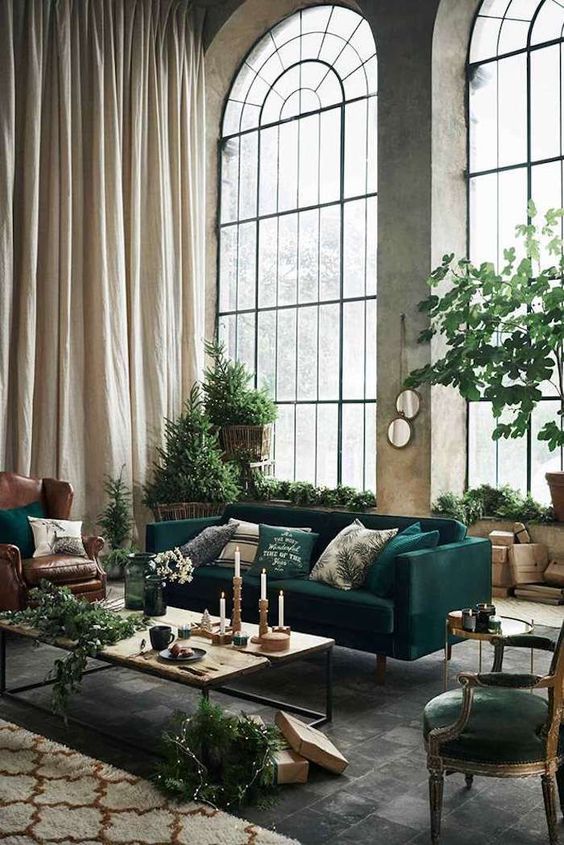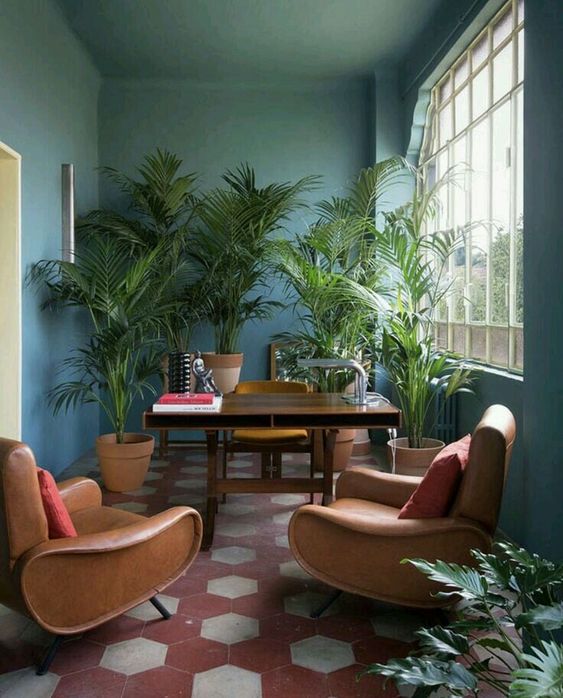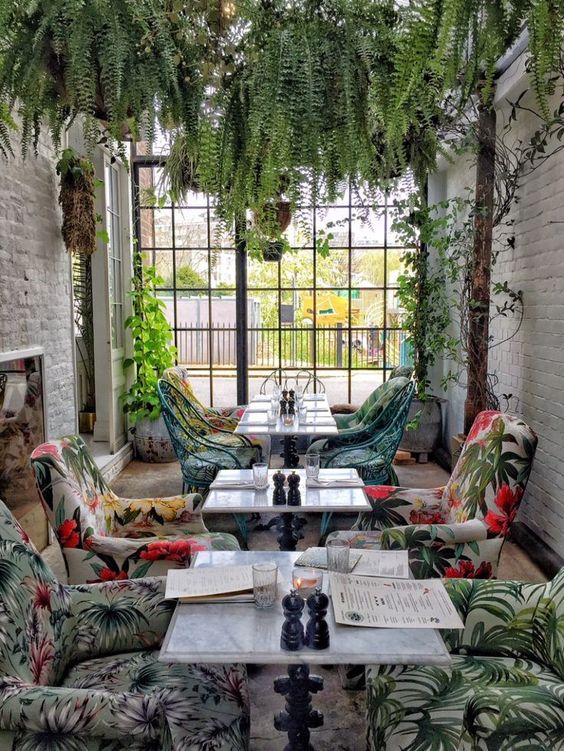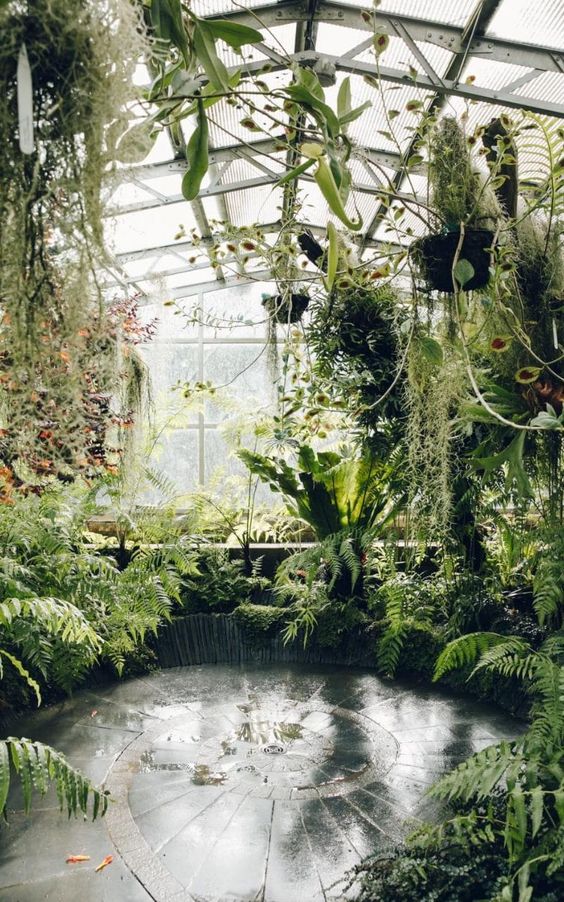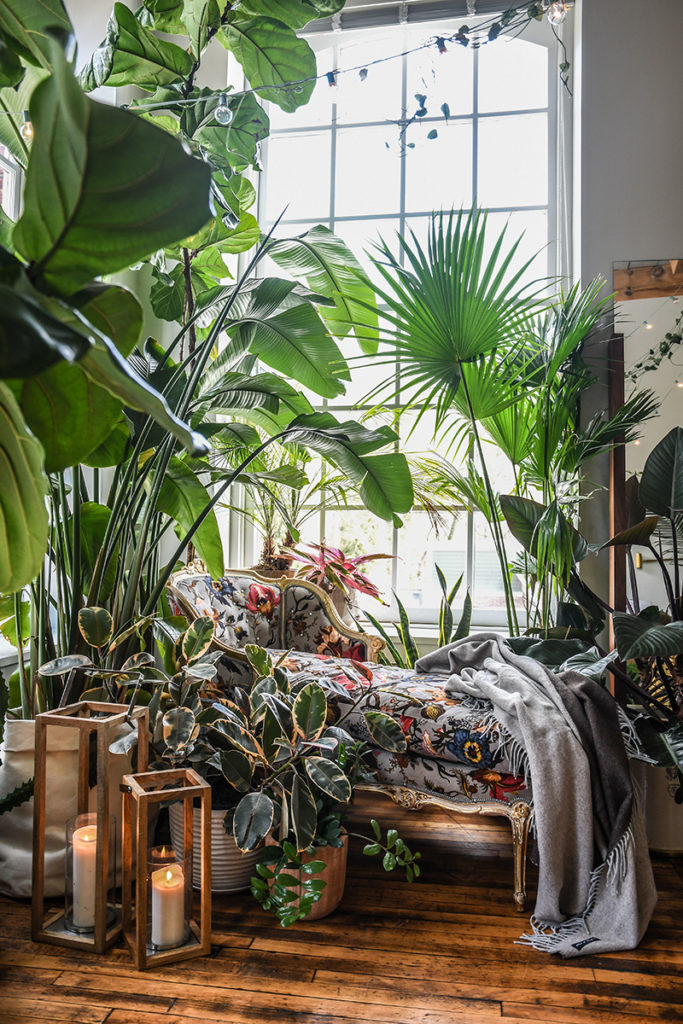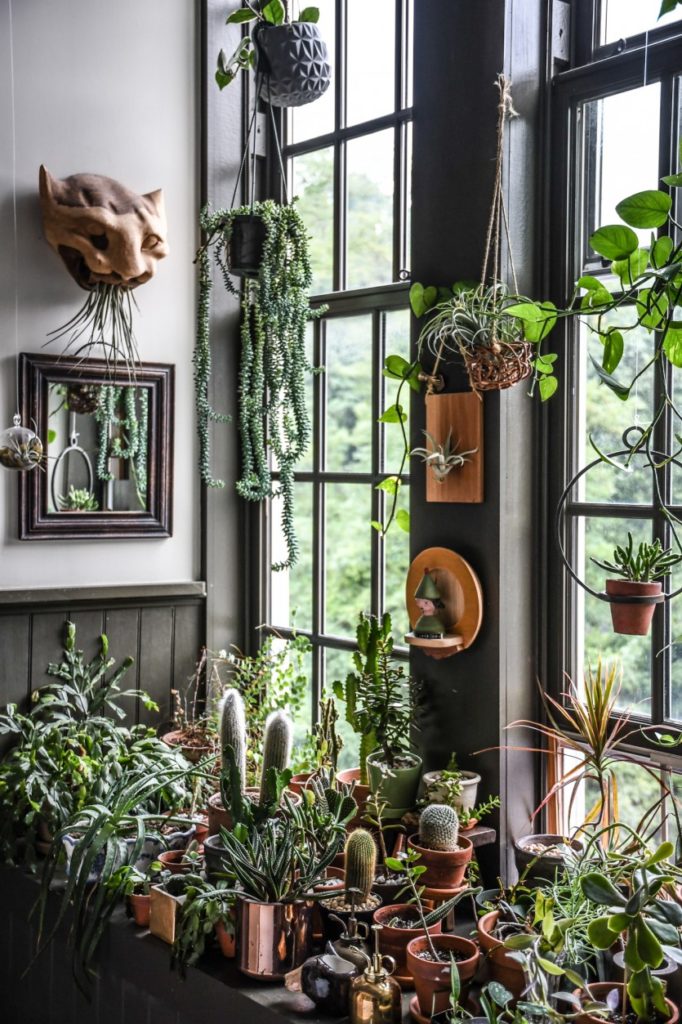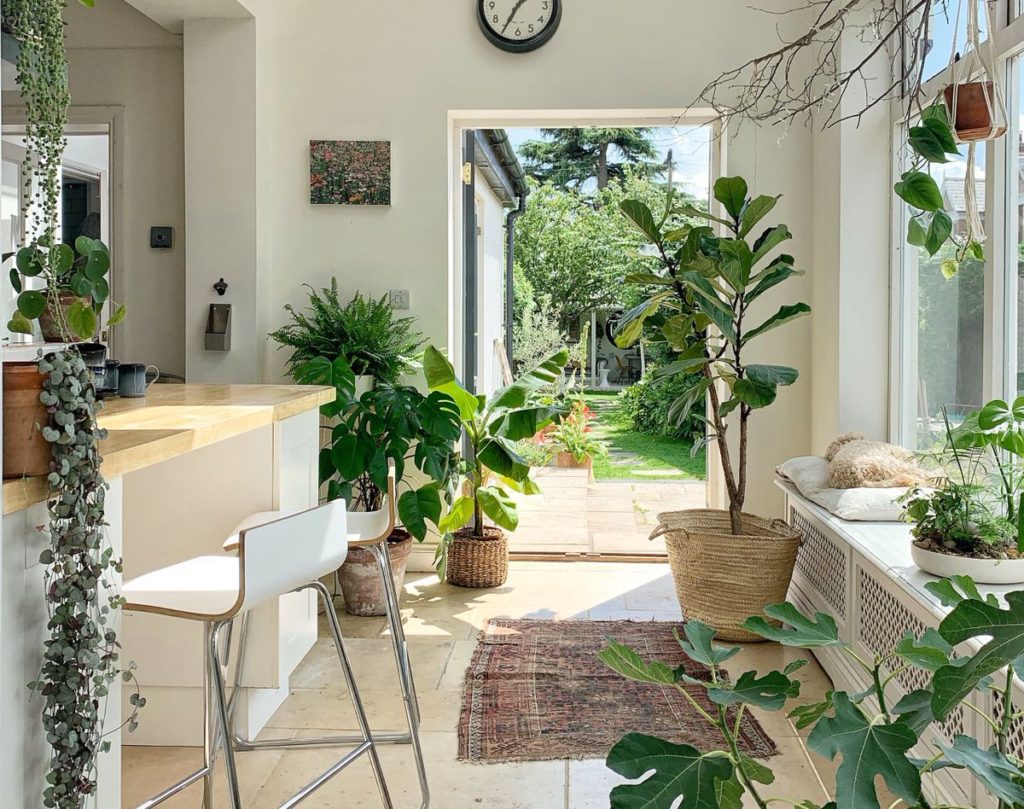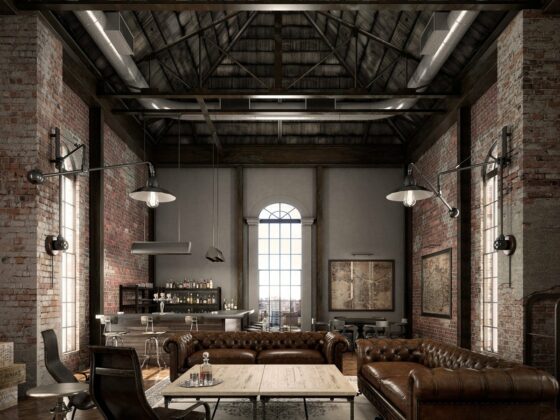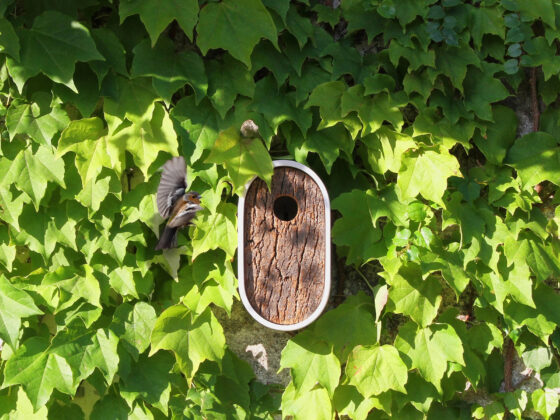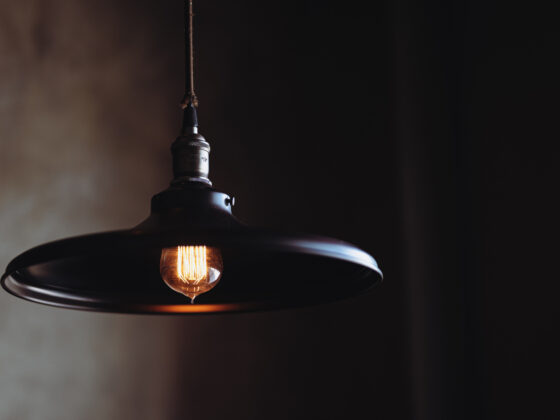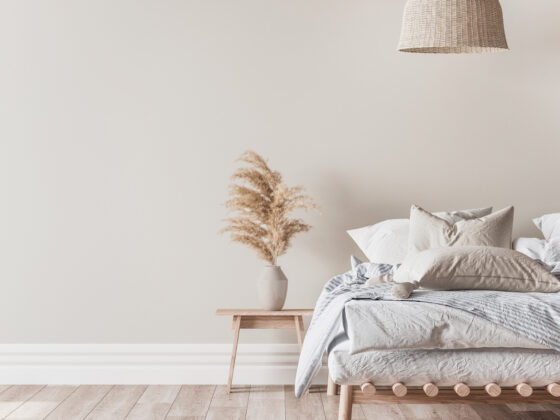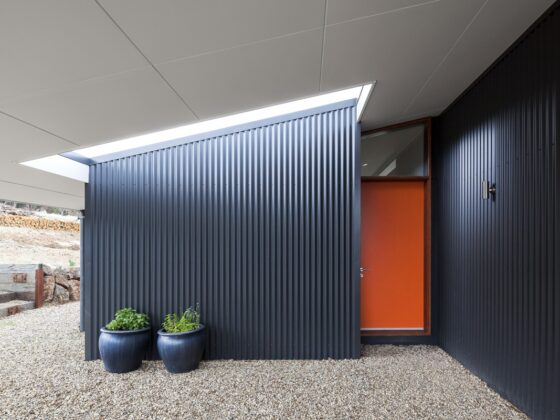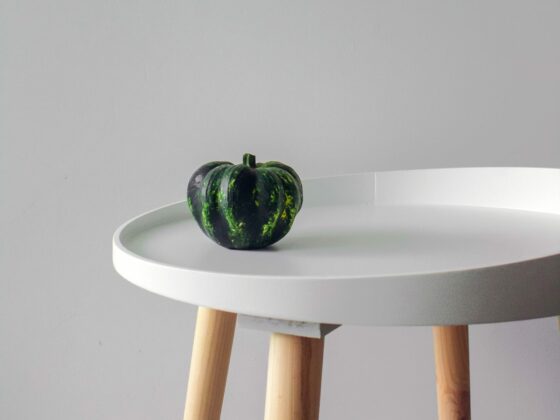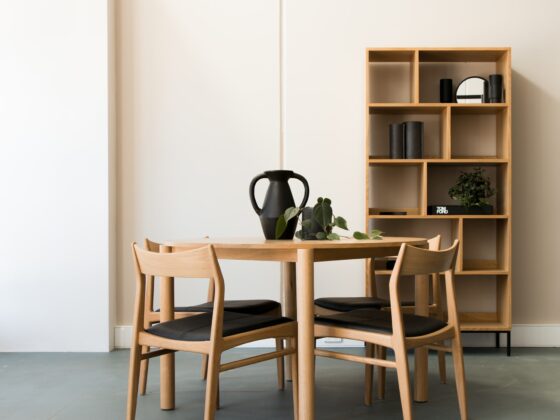Table of Contents
This article contains affiliate links for which I may receive a small commission, at no additional cost to you, should you decide to make a purchase by using them. Learn More
Greenery in Architecture is one of the must-haves of recent years: green intended as a color but also as nature. Part of the credit goes to the 2020 interior trends of Biophilic Interior Design: what is it, and what are its characteristics?
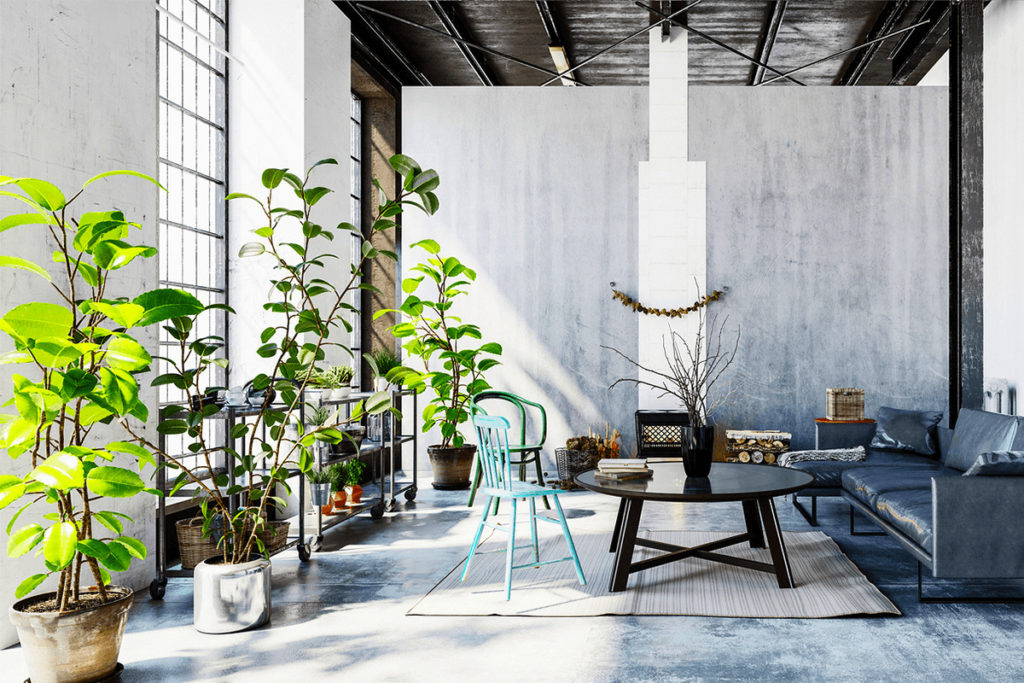
Biophilic Design can bring man closer to nature, thanks to its extensive use of plants and shapes that recall the surrounding landscape. According to psychologists, an environment designed according to the canons of Biophilic Design improves the mood and makes the person feel more active and – above all – proactive over time.
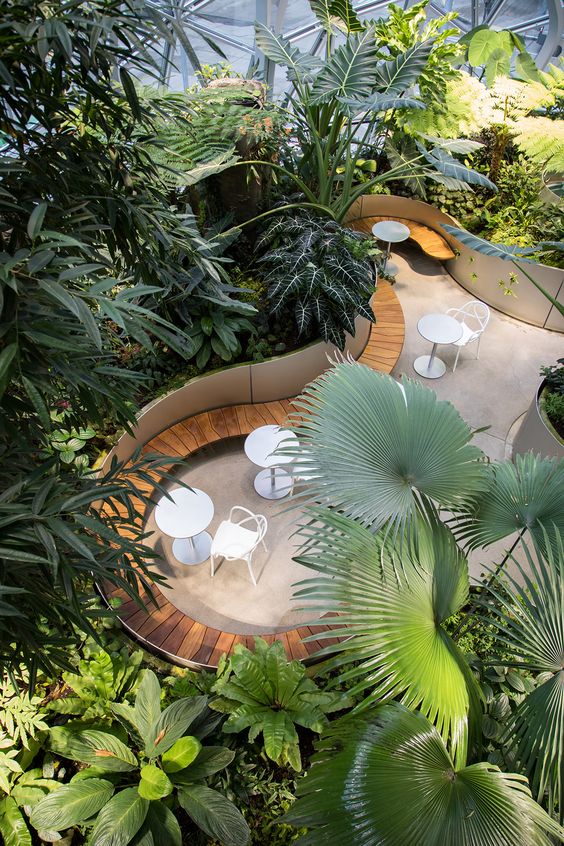
Erich Fromm created the term “biophilia” in 1964, which indicated the psychological tendency to be attracted to everything alive or vital. Over the decades, this hypothesis was studied and tested by psychologists and scientists, going so far as to influence the world of architecture and design.
At this moment in time, The Vertical Woods in Milan, Central Park One in Sidney, and the Eco-Hotel The Scarlet in Cornwall are clear examples of this trendy design.
Biophilic Interior Design is increasingly present in furniture, houses, retail, offices, co-working areas, and commercial spaces everywhere.
The benefits of nature on health are apparent. Consequently, environments with organic shapes, with natural materials also have a positive impact on health.
The physiological impact of contact with nature must be taken into consideration. Just think about this science-based information: in many cases, stress is the leading cause of many cardiovascular diseases and mental disorders. As a solution, anxiety can be significantly reduced by spending time in a natural and green-oriented environment.
Benefits of Biophilic Interior Design
Health Benefits
- Increase in overall sympathetic activity;
- lowering of the blood glucose level.
- Improved productivity.
- Increased employee engagement.
- Reduced stress levels.
- Lowering of cortisol level;
- Heart rate reduction;
- Drop in blood pressure;
- Mental recovery & reduced tiredness.
Financial Benefits
- Houses with a beautiful view over a green landscape, have higher chances in selling the property – 50% to 120% more compared to an apartment of the same type but with a panorama that is not as beautiful;
- Classrooms that are well lit naturally throughout the school day show a faster learning index of children;
- There is an equally positive influence of nature on the workplace, which makes employees more productive and less stressed;
- Hospitalized patients with access to greenery, show about 10% less hospital stay than other patients.
- Businesses located in nature surrounded areas benefit from more significant interest from buyers, who perceive any higher prices as justifiable.
- Green environments improve the quality of life, productivity, and well-being.
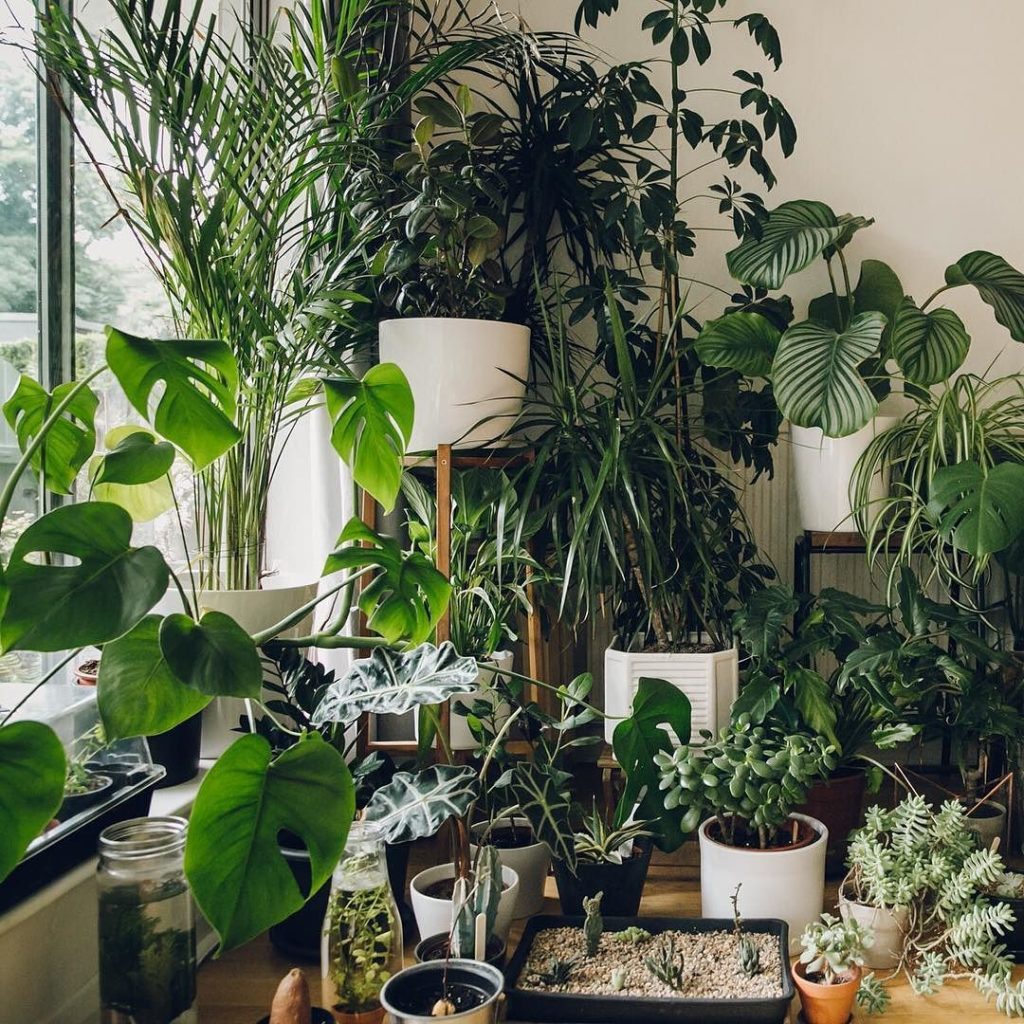
What is Biophilic Design?
Let’s start by defining the term “biophilia,” by which we mean the love of life and every living organism. The first use of this word was by the German psychologist Erich Fromm, who describes the psychological orientation of the human being attracted to everything that is living or that transmits vitality.
The suffix -philia means the attractions and positive emotions that people have towards organisms, species, habitats, and objects immersed in their natural environment. Though Fromm defined the concept, this idea was introduced several times. Personalities like Aristotle described a very similar concept talking about friendship, reciprocity, and love of life.
Returning to the initial question, we can, therefore, define Biophilic Design as an innovative way of designing the places we live and work in. The relationship between man and nature is constant, intimate, and fundamental. Considering how the urban jungle is getting bigger and bigger with each decade, landscapes will always remain the element to escape from pollution and cement.

Credit to @hiltoncarter 

In recent years, there has been an increasing interest in the so-called “green architecture,” which represented the missing piece of the puzzle in sustainable development. Architecture and design are essential parts of the process of creating a living space by changing the area based on the intended use.
Origins
Biophilia is a scientific hypothesis proposed in 1984 by Edward O. Wilson that empirically detects in humans the “innate tendency to focus their interest on life and life processes.” In 1993, Wilson suggested that biophilia is attributable to a complex of phylogenetically adaptive learning rules.
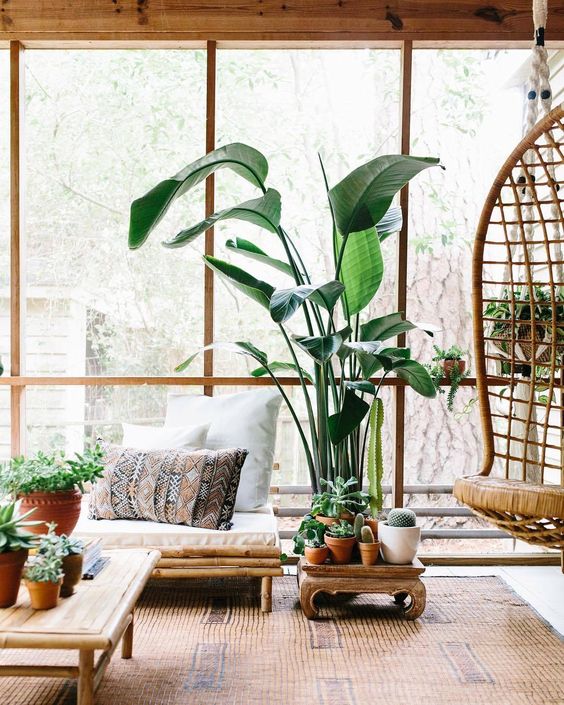
Ultimately, in 2002, Wilson proposed a new definition, according to which biophilia is “the innate tendency to focus our attention on life forms and everything that reminds of them and, in some circumstances, to become affiliated to them emotionally.” The latter definition, focusing on the main characteristics of biophilia (fascination and asymmetric empathy), allowed the first experimental tests of the hypothesis.
The biophilic instinct would, therefore, find expression in attraction, that is, the ability to be drawn by natural stimuli. Fascination and asymmetric understanding would constitute the two central constructs of biophilia.
Colors, Furniture and Textures
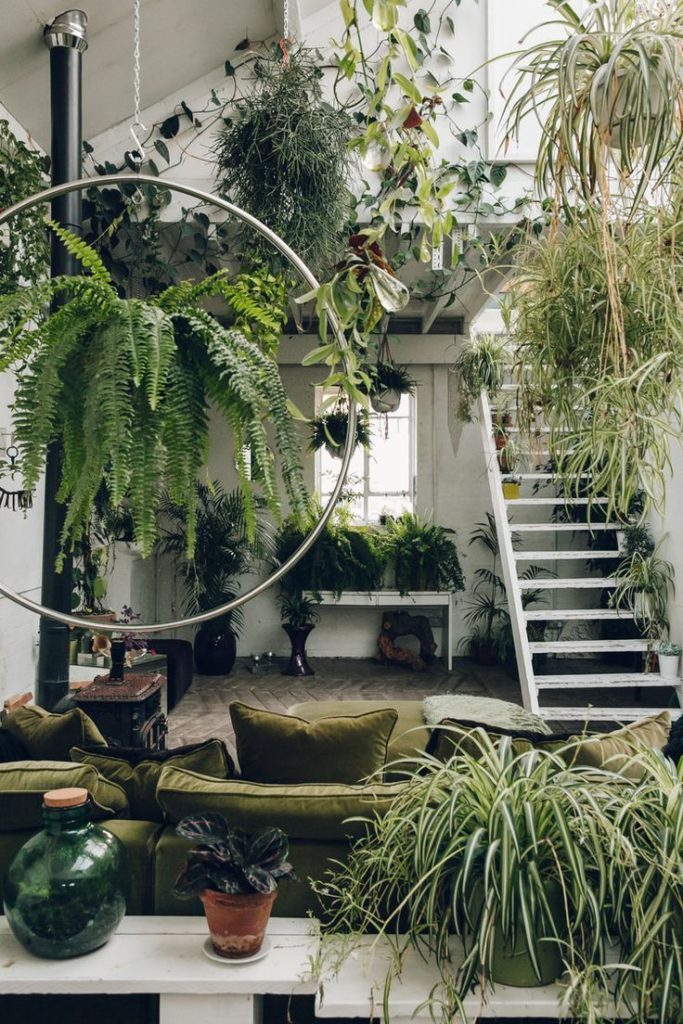
What are the fundamental criteria for designing this type of space?
Natural surrogates are the simplest biophilic elements to include in already anthropized environments. These are patterns, shapes, and sequences found in nature, such as leaves, shells, which are mostly reused in furniture, fabrics, furnishings, and decorations.
In fact, human sensory mechanisms have developed as a response to natural stimuli, so people instinctively prefer curved line forms. Graded variations of colors and textures, preferably in truly natural materials, and not only imitators (such as, for example, laminate floors that copy actual wood). But also the real presence of nature through as many plants as possible.
- Choose natural materials that come from the surrounding environment or that can easily integrate with. Always try to use wood, stone, and greenery.
- Give great importance to natural light, thanks to large windows and a furniture design that does not block the sunlight. Choose furniture with soft lines and opt for natural colors that recall a clean environment: yes to the shades of brown and beige, greens, and blues.
- When creating biophilic designs, think about which colors would “feel” better in a specific circumstance. If you are designing a bedroom, or a place that needs to be filled with a restoring and calming vibe, choose light blues and grays.
- If the space you are creating is stimulating and energetic, use colors like yellow and orange.
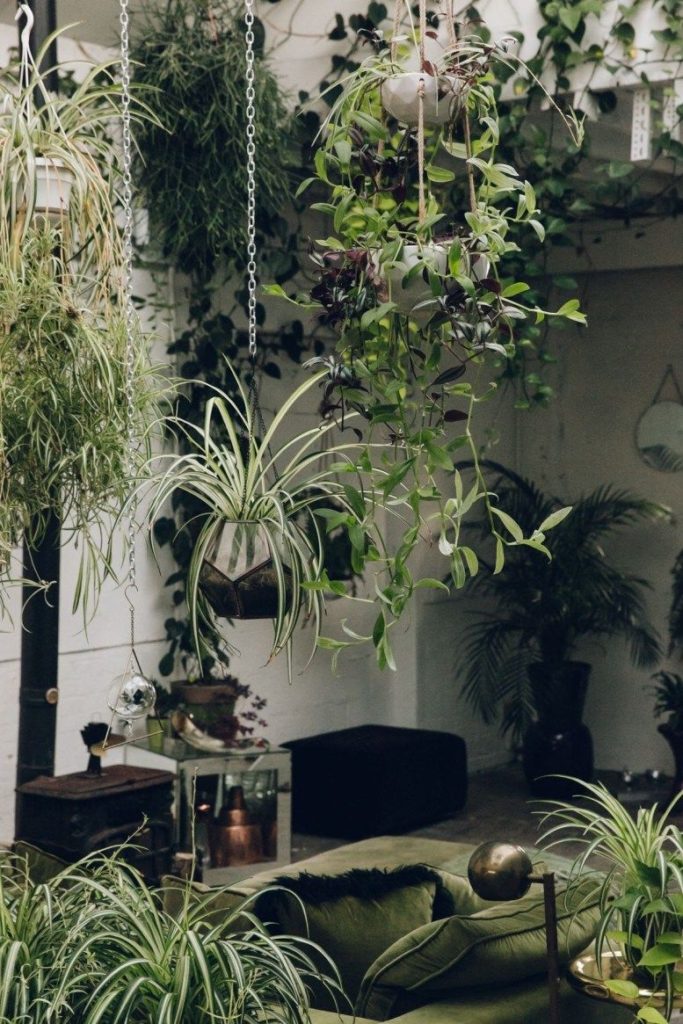
Natural textures, patterns, and shapes are all rich and complex, and yet incredibly structured.
Biomorphic forms and patterns can be used for the structure of your house, such as in beams or columns, or for interior finishes, such as accessories and décor. After all, biophilic design is not something complicated to recreate and achieve in your own home!
There are no dull repetitions in nature. We find rhythmic repetitions and layers, both comfortable and reassuring in the human mind and body. Stimulating our senses through variations in our environment, including light, texture, and color, allows us to interact with and respond to it intentionally.

The human body feeds on experiences that involve our precious sensory system, with a preference for the complexity that characterizes nature.
The elements of biophilic design can reproduce the theme of nature, stimulating interest, and involvement. The stratification of a variety of finishes and natural features creates a deep layer of information. Our mind and body then respond to the stimuli through cognitive functioning, creativity, curiosity, and imagination.
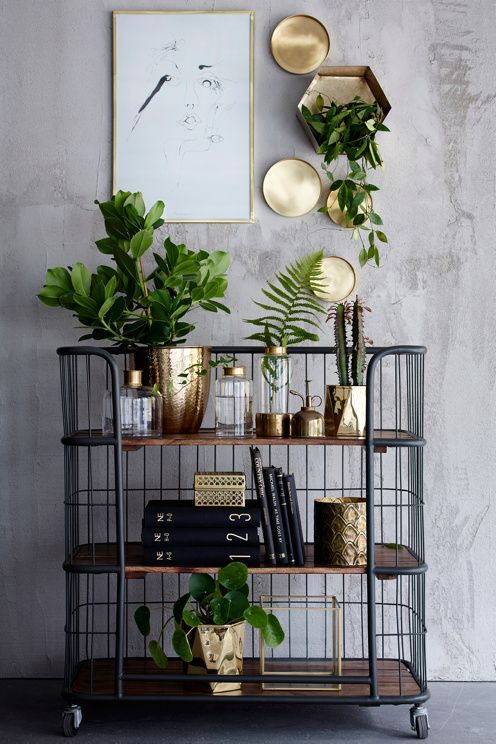
We are naturally attracted to the elements and motifs that accurately document the passage of time. The simulation of traces of natural processes – erosion, decomposition, – makes us perceive materials as natural and not as artificial. We are driven to read a story, a worm presence of the material, which adds to the richness, complexity, and liking of an environment.
Consider all of these elements in choosing the patterns and finishes for your biophilic spaces!
Conclusions
Among the new trends in architecture during 2019 and 2020, a new concept is rapidly making its way to the top: the “well-being living” or “well-living” on which certification of various levels are being born.
By residential well-being, we mean the need to organize home spaces, and workplaces, so that the perceptual response of the individual, responsible for a more balanced personal life and better job performance.
Affinity, attraction, fascination, and above all, a question of connection. Like any bond of deep love, biophilia – literally the “passion for life” – goes far beyond the mere aesthetic appeal or enchantment that the contemplation of nature can generate in human beings. It’s a powerful union. Even better, an interdependence.
This means that the quality of human life, health, mental balance, and well-being depends on the degree of connection that can be maintained with the natural elements, even when living in the city. This is a connection that is part of what it’s defined as “Web of Life”: the network of life of which man is part of, together with all other living beings. In short, the human being does not merely love nature: it is nature.

